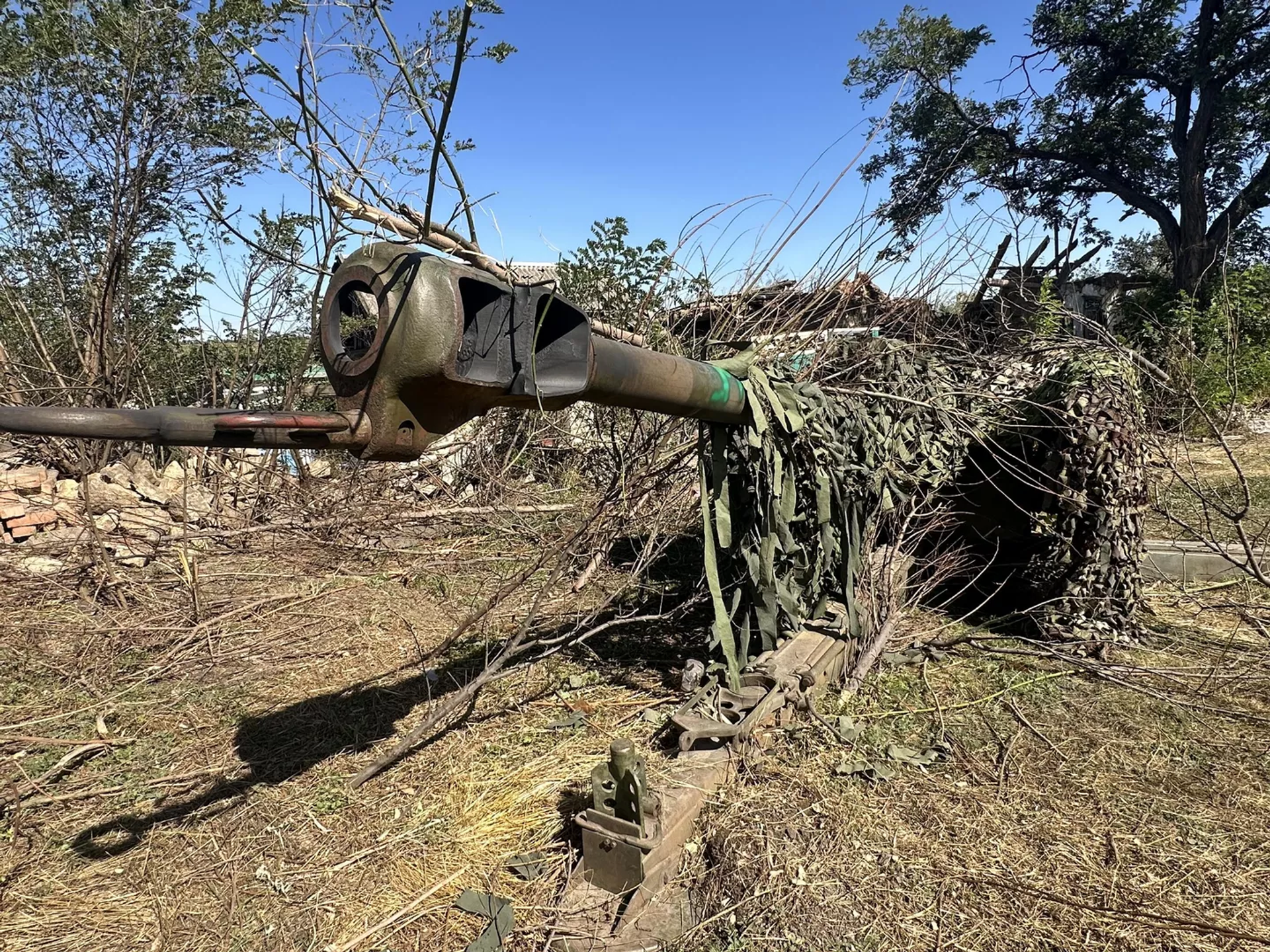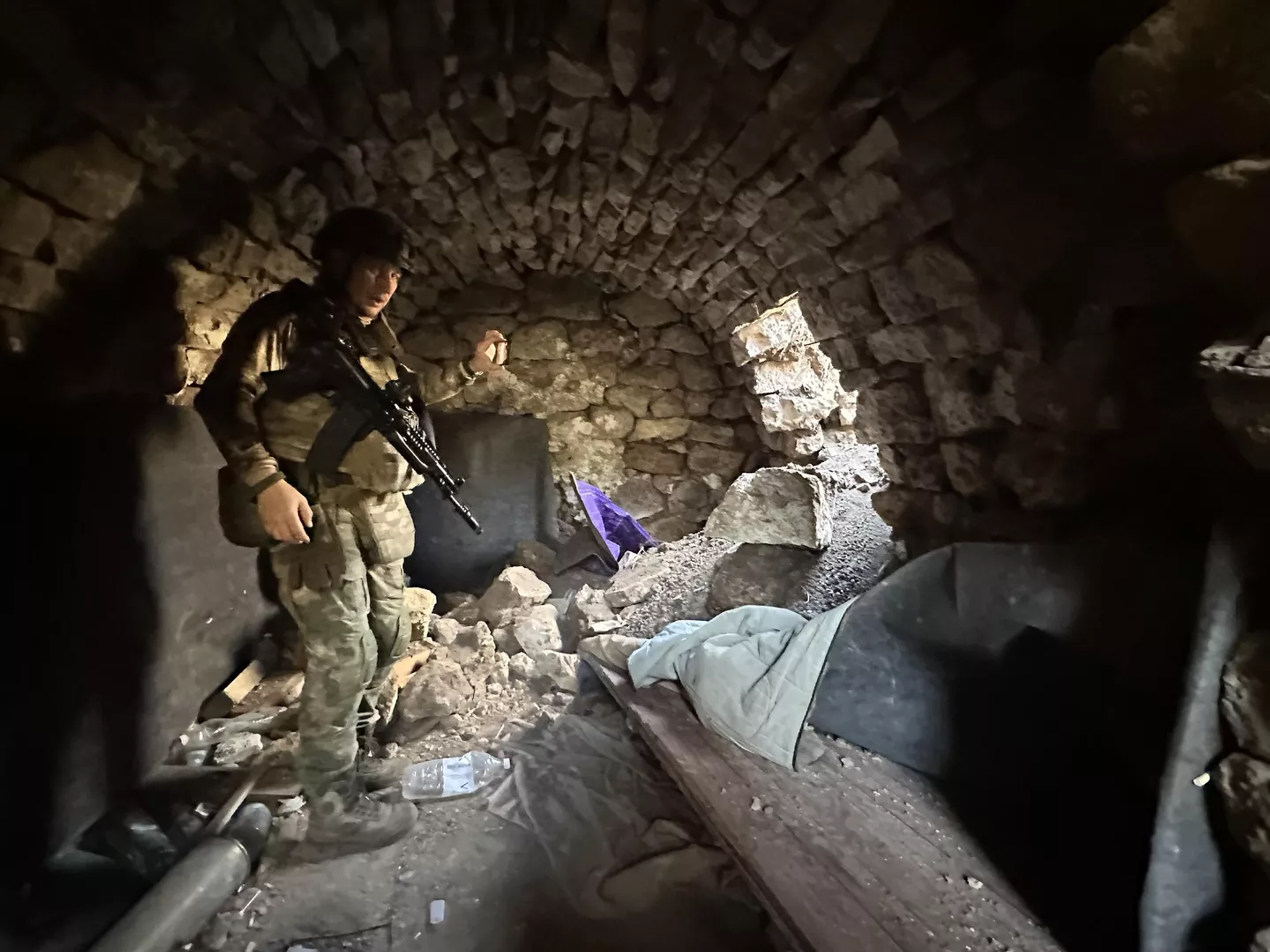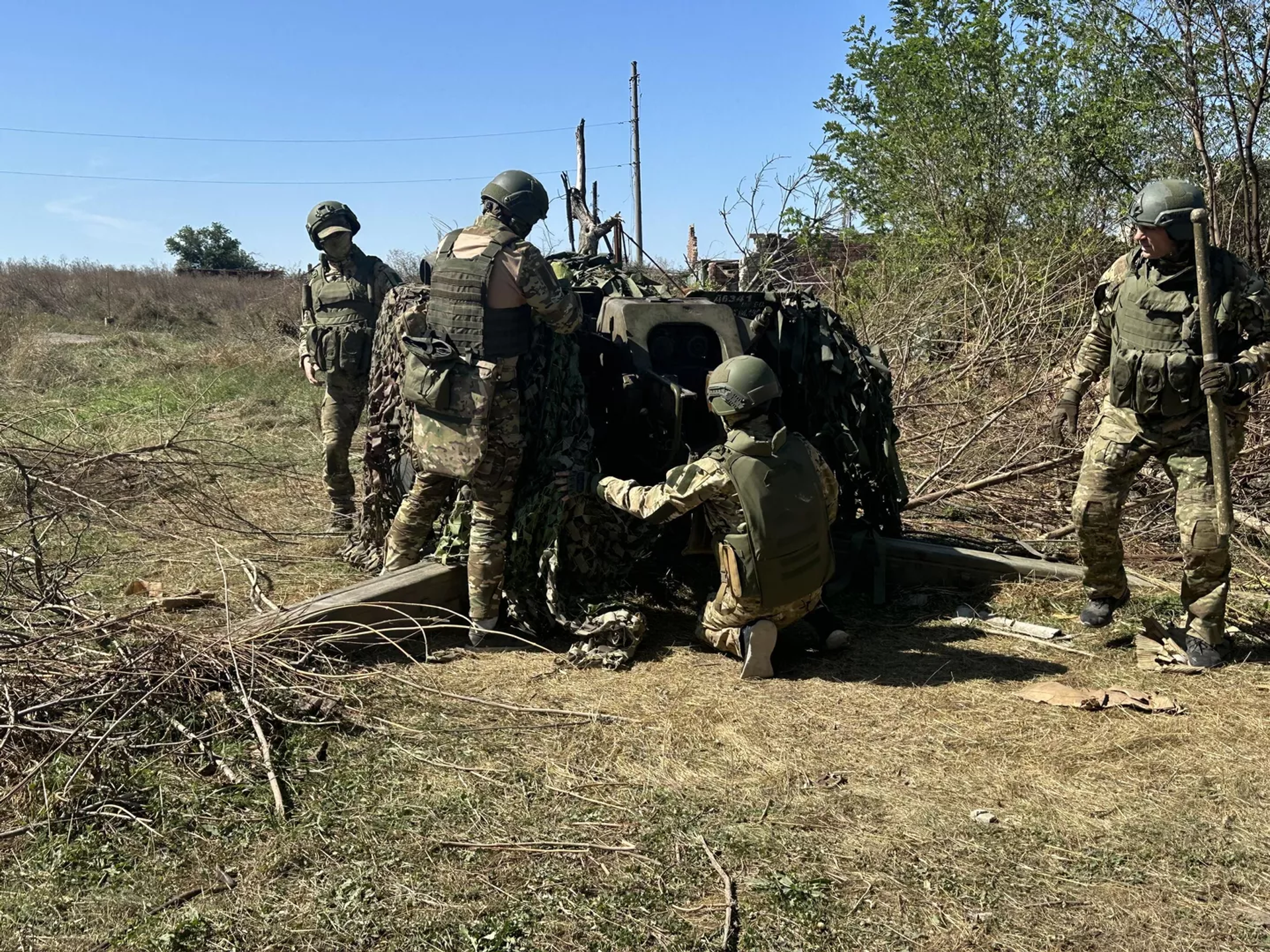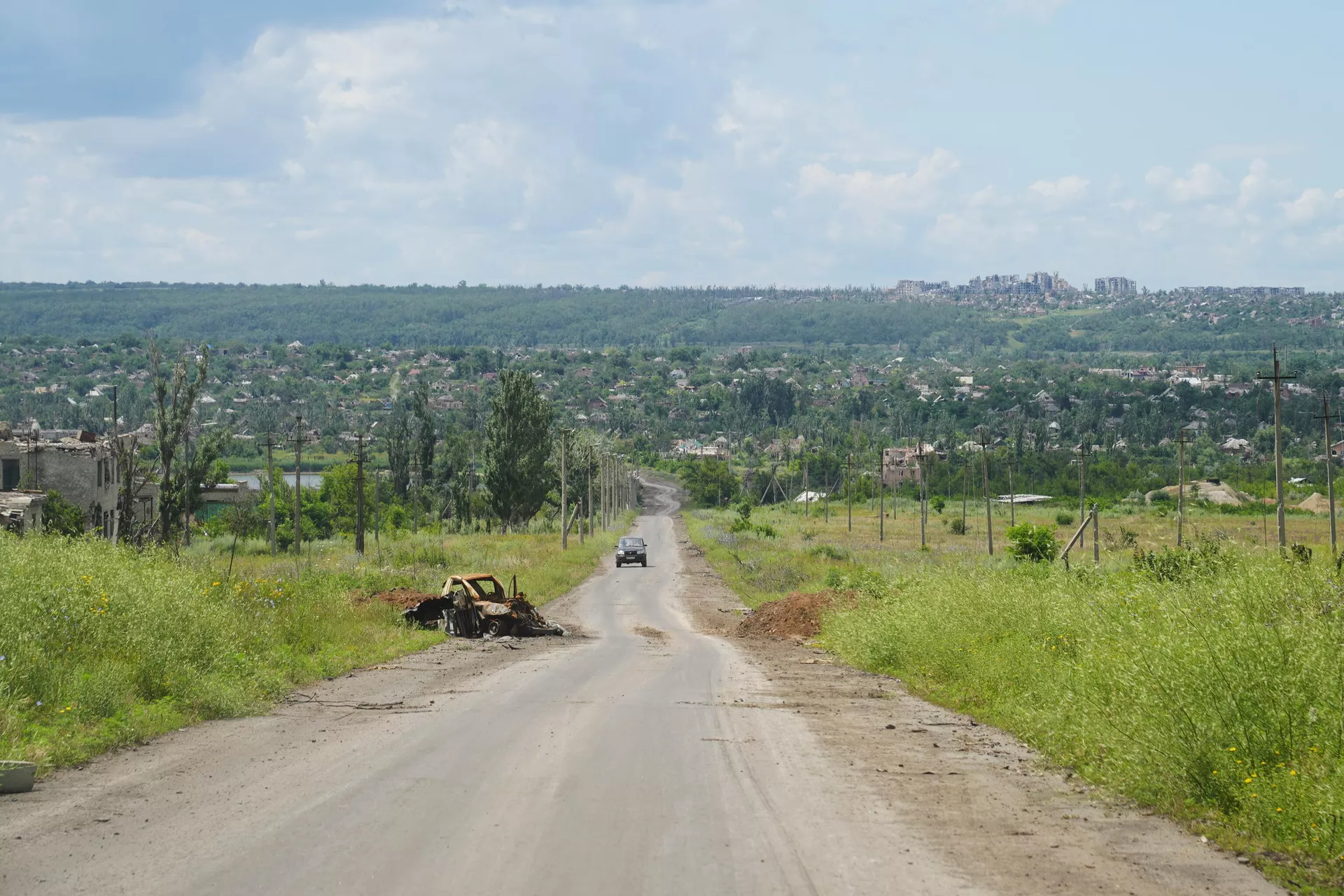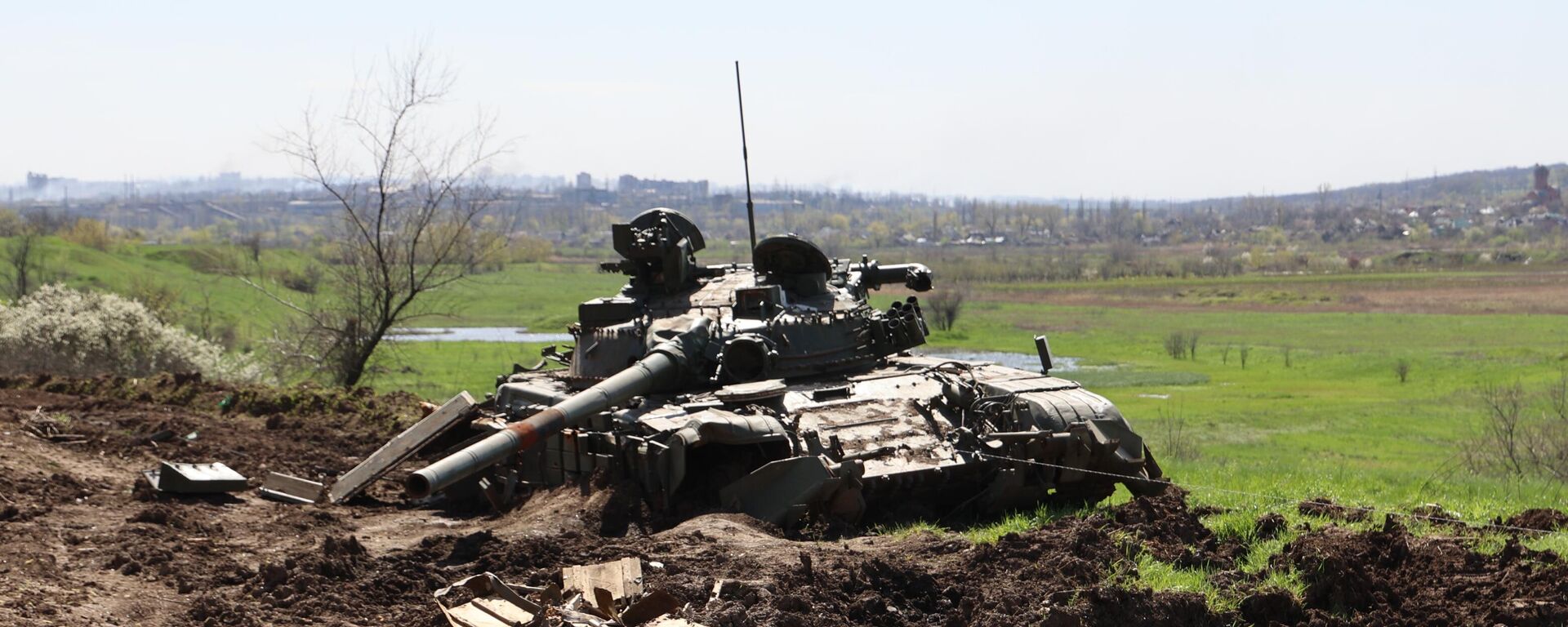https://sputnikglobe.com/20230913/somebody-has-to-do-it-why-volunteers-fight-in-artemovsk-1113338210.html
'Somebody Has to Do It': Why Volunteers Fight In Artemovsk
'Somebody Has to Do It': Why Volunteers Fight In Artemovsk
Sputnik International
Battles raging around-the-clock – the enemy never stops trying to pincer the city, trying to seize the dominant heights, while the volunteer formations are holding the southern flank. Why deputies, children of wealthy parents and other ordinary people decided to go to the front - read in Sputnik's material.
2023-09-13T14:53+0000
2023-09-13T14:53+0000
2023-09-13T17:07+0000
russia's special operation in ukraine
ukrainian crisis
russia
state council
state duma
kharkov
donetsk
russian ministry of defense
volunteer forces
https://cdn1.img.sputnikglobe.com/img/07e6/09/12/1100922695_0:160:3073:1888_1920x0_80_0_0_4fca8bb25cdf7c8178c859e26ebfa67c.jpg
At the Vanguard of Deputy CorpsA huge pickup truck with the unexpected inscription "DEPUTY" (State Duma deputy – ed. note Sputnik) – white letters on the black background of the license plate – pulls up to the gas station in Enakievo, the arranged meeting place. And it's not just the driver's call sign. At the wheel is 39-year-old Eduard Sharafiev, a member of the State Council of the Republic of Tatarstan. But that's in his former civilian life. Now, he serves as the deputy commander of the St. George Volunteer Reconnaissance and Assault Brigade.My guide is fully equipped: body armor, helmet, pouches with extra magazines, an assault rifle, and a tactical first-aid kit at his side. Eduard has been here for many months and is distinctly different from his fellow deputies, who come in waves to "do the rounds" on the third line in front of the cameras. However, he is no exception.The backbone of the brigade consists of three battalions. The brigade has no tanks yet, but they (the Russian Defense Ministry) promise to provide them soon. As for artillery, they have plenty – Grad multiple rocket launchers, towed howitzers, and self-propelled guns. Two battalions are engaged in combat, rotating to relieve each other. Another one, the assault battalion, remains in reserve. They keep it in case the command gives the order to advance in the direction of Artemovsk (Bakhmut). For now, it is a positional standoff.On the southern flank, the enemy is trying to seize the predominant heights in the areas of Kleshcheyevka, Kurdyumovka, and Andreyevka. If the Ukrainian Armed Forces reach this line, the logistical routes connecting Artemovsk (Bakhmut) with the rest of the Donetsk People's Republic – primarily the road to Gorlovka – will be in jeopardy. Losing positions in the north would force Russian troops to abandon the city. Preventing this outcome is the task of the St. George Brigade.Howitzer Camouflaged as FirewoodWe drive northwest from Debaltsevo. The further we get from the rear, the worse the road gets. The pickup truck bounces from side to side as it proceeds over potholes. Signs reading Mines and checkpoints are a common sight. The trees look bare, their branches shorn by shrapnel. We cautiously cross a damaged bridge, symbolically shaped like the letter V, and soon arrive at our destination.The village (we cannot name it) has been completely destroyed by artillery fire. Not a single house, barn, or shed remains intact - just rubble everywhere. In a garden overgrown with weeds, the grass is smoldering due to the aftermath of a recent strike. Sharp as razors, shell fragments are scattered everywhere, seemingly eager to pierce the soles of your boots.At first glance, no one is here. But five fighters emerge from the nearest basement, having received instructions from the reconnaissance team. They rush to the D-30 howitzer, wrapped in a gray-green net, and prepare it for battle. The artillery piece is well camouflaged. From three to four meters away, it looks like a pile of firewood covered with an old mat. Even an experienced drone pilot would not be able to spot it.Incidentally, back in the summer, the 1st Donetsk Army Corps fighters complained they were very short on 122mm shells for their D-30 howitzers. It got to the point where they resorted to using older and more primitive 152mm D-20s, put into service right after the Great Patriotic War (WW2). However, judging by what we saw with the St. George Brigade’s artillerymen, it seems that the Russian industry has picked up the pace in producing modern ammunition.Elusive TankWe settle down in a cramped basement. It's well lit. A generator hums softly in the ruins of the house upstairs. Upon seeing a reporter with a camera, the fighters put on balaclavas. They're not worried about themselves, but about their families. Ukrainian intelligence agencies, actively using AI, could easily identify an artilleryman's name, surname, and family address from his face.For this reason, fighters are reluctant to talk about themselves.As for the fighter code-named “Saiga”, this is his first deployment to the Special Military Operation Zone. At first, he tried to “self-mobilize” through the Ministry of Defense but suffered a setback – he lost his military ID. He then joined as a volunteer. He admits that the most frightening experience is being under tank fire. The speed of its shell is extremely rapid, with only fractions of a second between the moment it is fired and the moment it hits. There is no time to take cover. This tank had already destroyed one of the two guns in the battery.“Reva” is perhaps the most experienced here. He has been fighting since February 2022. He has been near Kiev, Izyum in the Kharkov region, and on the Kremennaya-Svatovo line. What's more, he remembers his first battle when artillery struck their column near the Ukrainian capital. It was terrifying, but he says you get used to it over time. You push the fear aside, so it does not interfere with your combat duties.What Motivates These Volunteers?Each fighter in the volunteer brigade has his own motivation. For “Reva”, a native of Rostov, he has many relatives in Donbass, some of whom have lost their lives in the nine-year conflict, and he seeks revenge. “Kolyvan”, who has a military background, finds satisfaction in reliving his conscription service and working again with his beloved D-30 howitzer. And the brigade's deputy commander, Eduard Sharafiev, who goes by the nom de guerre “Deputy”, admits that he wants to set an example for some of his colleagues who stayed behind on the home front. He was not drafted under the partial mobilization drive because he had never served in the army, so he decided to volunteer.There are also children of “privileged” parents among the brigade's fighters. Arseny Sterligov is the son of the well-known businessman German Sterligov. He is a cheerful, modest, and reserved young man who shies away from the camera and refuses to give interviews. However, when asked directly why he didn't use his father's status to shun the front lines, he responded succinctly:This statement captures the essence of the "Georgievtsy,” the volunteer fighters. Of course, it is a twist of fate that three deputies ended up in the same combat unit.Nevertheless, it is not by chance that the special military operation brings together people, who during peacetime had neither a mutual circle of acquaintances, nor common interests nor did they have a common goal. Today, they are together because "somebody has to do it".
https://sputnikglobe.com/20230817/russia-develops-first-23mm-guided-detonation-munition---source-1112679738.html
https://sputnikglobe.com/20230730/how-many-tanks-has-ukraine-lost--1112263333.html
russia
kharkov
donetsk
Sputnik International
feedback@sputniknews.com
+74956456601
MIA „Rossiya Segodnya“
2023
Andrey Kots
https://cdn1.img.sputnikglobe.com/img/07e7/09/0d/1113345217_428:0:2132:1704_100x100_80_0_0_572c3cfc2b7e5fdab0f340359bd4760b.jpg
Andrey Kots
https://cdn1.img.sputnikglobe.com/img/07e7/09/0d/1113345217_428:0:2132:1704_100x100_80_0_0_572c3cfc2b7e5fdab0f340359bd4760b.jpg
News
en_EN
Sputnik International
feedback@sputniknews.com
+74956456601
MIA „Rossiya Segodnya“
Sputnik International
feedback@sputniknews.com
+74956456601
MIA „Rossiya Segodnya“
Andrey Kots
https://cdn1.img.sputnikglobe.com/img/07e7/09/0d/1113345217_428:0:2132:1704_100x100_80_0_0_572c3cfc2b7e5fdab0f340359bd4760b.jpg
state duma deputy, state council deputy, artemovsk, bakhmut, st. george volunteers, reconnaissance brigade, assault brigade, russian brigade, russian volunteers, russian volunteer fighters, russian fighters, russian soldiers, russia special military operation, ukrainian crisis, failed counteroffensive, ukrainian counteroffensive, us weapons, nato equipment, nato-supplied military equipment, us arms for ukraine, foiled counteroffensive, counteroffensive attempt, thwarted counteroffensive, counteroffensive effort
state duma deputy, state council deputy, artemovsk, bakhmut, st. george volunteers, reconnaissance brigade, assault brigade, russian brigade, russian volunteers, russian volunteer fighters, russian fighters, russian soldiers, russia special military operation, ukrainian crisis, failed counteroffensive, ukrainian counteroffensive, us weapons, nato equipment, nato-supplied military equipment, us arms for ukraine, foiled counteroffensive, counteroffensive attempt, thwarted counteroffensive, counteroffensive effort
'Somebody Has to Do It': Why Volunteers Fight In Artemovsk
14:53 GMT 13.09.2023 (Updated: 17:07 GMT 13.09.2023) Battles raging around-the-clock – the enemy never stops trying to pincer the city, trying to seize the dominant heights, while volunteer formations are holding the southern flank. Find out why deputies, the children of wealthy parents and other ordinary people decided to go to the front by reading this Sputnik article.
At the Vanguard of Deputy Corps
A huge pickup truck with the unexpected inscription "DEPUTY" (State Duma deputy – ed. note Sputnik) – white letters on the black background of the license plate – pulls up to the gas station in Enakievo, the arranged meeting place. And it's not just the driver's call sign. At the wheel is 39-year-old Eduard Sharafiev, a member of the State Council of the Republic of Tatarstan. But that's in his former civilian life. Now, he serves as the deputy commander of the St. George Volunteer Reconnaissance and Assault Brigade.
My guide is fully equipped: body armor, helmet, pouches with extra magazines, an assault rifle, and a tactical first-aid kit at his side. Eduard has been here for many months and is distinctly different from his fellow deputies, who come in waves to "
do the rounds" on the third line in front of the cameras. However, he is no exception.
"In our brigade, we have representatives of the entire hierarchy of the legislative power, so to speak," Sharafiev smiles, deftly steering the wheel. "We have a municipal deputy, he is a platoon commander. I am from the regional level, a member of the State Council. And our brigade commander is Alexander Yurievich Borodai. He is from the State Duma. When we get together, we joke that it is an offsite plenary session. But in the brigade, there are certainly people from all over the country, with an average age of over 30".
The backbone of the brigade consists of three battalions. The brigade has no tanks yet, but they (the Russian Defense Ministry) promise to provide them soon. As for artillery, they have plenty –
Grad multiple rocket launchers, towed howitzers, and self-propelled guns. Two battalions are engaged in combat, rotating to relieve each other. Another one, the assault battalion, remains in reserve. They keep it in case the command gives the order to advance in the direction of
Artemovsk (Bakhmut). For now, it is a positional standoff.
On the southern flank, the enemy is trying to seize the predominant heights in the areas of Kleshcheyevka, Kurdyumovka, and Andreyevka. If the Ukrainian Armed Forces reach this line, the logistical routes connecting Artemovsk (Bakhmut) with the rest of the
Donetsk People's Republic – primarily the road to Gorlovka – will be in jeopardy. Losing positions in the north would force Russian troops to abandon the city. Preventing this outcome is the task of the St. George Brigade.
Howitzer Camouflaged as Firewood
We drive northwest from Debaltsevo. The further we get from the rear, the worse the road gets. The pickup truck bounces from side to side as it proceeds over potholes. Signs reading Mines and checkpoints are a common sight. The trees look bare, their branches shorn by shrapnel. We cautiously cross a damaged bridge, symbolically shaped like the letter V, and soon arrive at our destination.
The village (we cannot name it) has been completely destroyed by artillery fire. Not a single house, barn, or shed remains intact - just rubble everywhere. In a garden overgrown with weeds, the grass is smoldering due to the aftermath of a recent strike. Sharp as razors,
shell fragments are scattered everywhere, seemingly eager to pierce the soles of your boots.
At first glance, no one is here. But five fighters emerge from the nearest basement, having received instructions from the reconnaissance team. They rush to the
D-30 howitzer, wrapped in a gray-green net, and prepare it for battle. The artillery piece is well camouflaged. From three to four meters away, it looks like a pile of firewood covered with an old mat. Even an experienced drone pilot would not be able to spot it.
"Scope: 365, direction angle: 28-90, full charge, high-explosive shell," the senior commands abruptly. The spotter makes adjustments, fine-tuning the settings. "Fire!" The howitzer roars deafeningly, sending up a thick cloud of reddish dust. The crew immediately throws a camouflage net over it and rushes back into the basement. We follow suit, taking cover in the "smoke screen" created by the shot. The enemy is likely to see it not only from a drone, but possibly from a satellite as well. So any second now we can expect a "response".
Incidentally, back in the summer, the 1st Donetsk Army Corps fighters complained they were very short on 122mm shells for their D-30 howitzers. It got to the point where they resorted to using older and more primitive 152mm D-20s, put into service right after the
Great Patriotic War (WW2). However, judging by what we saw with the St. George Brigade’s artillerymen, it seems that the Russian industry has picked up the pace in producing modern ammunition.

17 August 2023, 13:55 GMT
We settle down in a cramped basement. It's well lit. A generator hums softly in the ruins of the house upstairs. Upon seeing a reporter with a camera, the fighters put on balaclavas. They're not worried about themselves, but about their families.
Ukrainian intelligence agencies, actively using AI, could easily identify an artilleryman's name, surname, and family address from his face.
For this reason, fighters are reluctant to talk about themselves.
"I commanded a D-30 howitzer crew during my military service," says the artilleryman known as Kolyvan, who bears the call sign of the Russian epic hero. "I am from Ulyanovsk, and this is my second contract in the special military operation zone. The first was near Kharkov. In my civilian life I made upholstered furniture for a living. It's a completely non-military job, although we had [applicator] guns there too (laughs), for upholstery work, but still! There are five of us in my crew. We have complete mutual understanding. From receiving the target coordinates to hitting the target, it takes only a minute and a half. This is considered a very good result."
As for the fighter code-named “Saiga”, this is his first deployment to the Special Military Operation Zone. At first, he tried to “self-mobilize” through the Ministry of Defense but suffered a setback – he lost his military ID. He then joined as a
volunteer. He admits that the most frightening experience is being under tank fire. The speed of its shell is extremely rapid, with only fractions of a second between the moment it is fired and the moment it hits. There is no time to take cover. This
tank had already destroyed one of the two guns in the battery.
"It’s been bothering us for a while," confirms an artilleryman code-named “Reva”, who wears a plush Cheburashka on his body armor (a good luck charm from his wife). "It jumps out, fires five or six rounds, and then retreats. But we'll get it for sure, just like we did with the American armored vehicle 'Bradley' recently. The enemy launched an offensive at seven in the morning. We responded, and the reconnaissance adjusted our fire. With the third or fourth shell, we scored a direct hit on the American vehicle, and it immediately started smoking. Then we hit the armored personnel carrier."
“Reva” is perhaps the most experienced here. He has been fighting since February 2022. He has been near Kiev, Izyum in the Kharkov region, and on the
Kremennaya-Svatovo line. What's more, he remembers his first battle when artillery struck their column near the Ukrainian capital. It was terrifying, but he says you get used to it over time. You push the fear aside, so it does not interfere with your combat duties.
What Motivates These Volunteers?
Each fighter in the volunteer brigade has his own motivation. For “Reva”, a native of Rostov, he has many relatives in Donbass, some of whom have lost their lives in the nine-year conflict, and he seeks revenge. “Kolyvan”, who has a military background, finds satisfaction in reliving his conscription service and working again with his beloved D-30 howitzer. And the brigade's deputy commander, Eduard Sharafiev, who goes by the nom de guerre “Deputy”, admits that he wants to
set an example for some of his colleagues who stayed behind on the home front. He was not drafted under the partial mobilization drive because he had never served in the army, so he decided to volunteer.
There are also
children of “privileged” parents among the brigade's fighters. Arseny Sterligov is the son of the well-known businessman German Sterligov. He is a cheerful, modest, and reserved young man who shies away from the camera and refuses to give interviews. However, when asked directly why he didn't use his father's status to shun the front lines, he responded succinctly:
"It would take too long to explain. Long story short: somebody has to do it."
This statement captures the essence of the "Georgievtsy,” the volunteer fighters. Of course, it is a twist of fate that three deputies ended up in the same combat unit.
Nevertheless, it is not by chance that the special military operation brings together people, who during peacetime had neither a mutual circle of acquaintances, nor common interests nor did they have a common goal. Today, they are together because "somebody has to do it".


